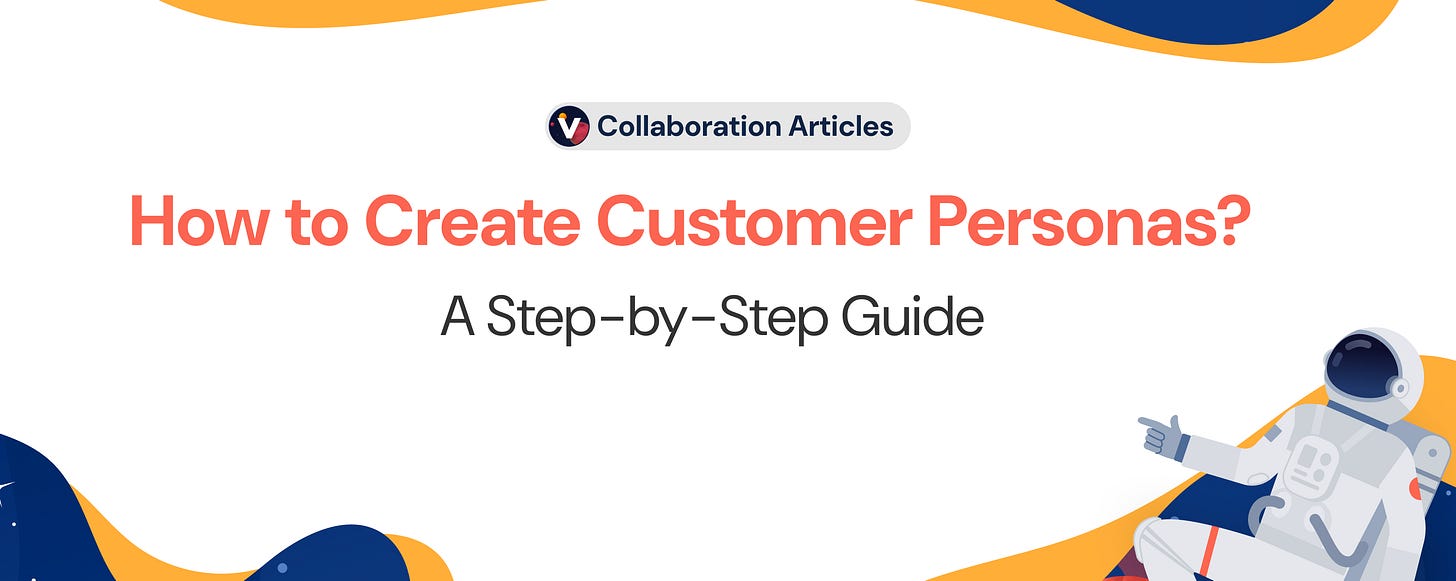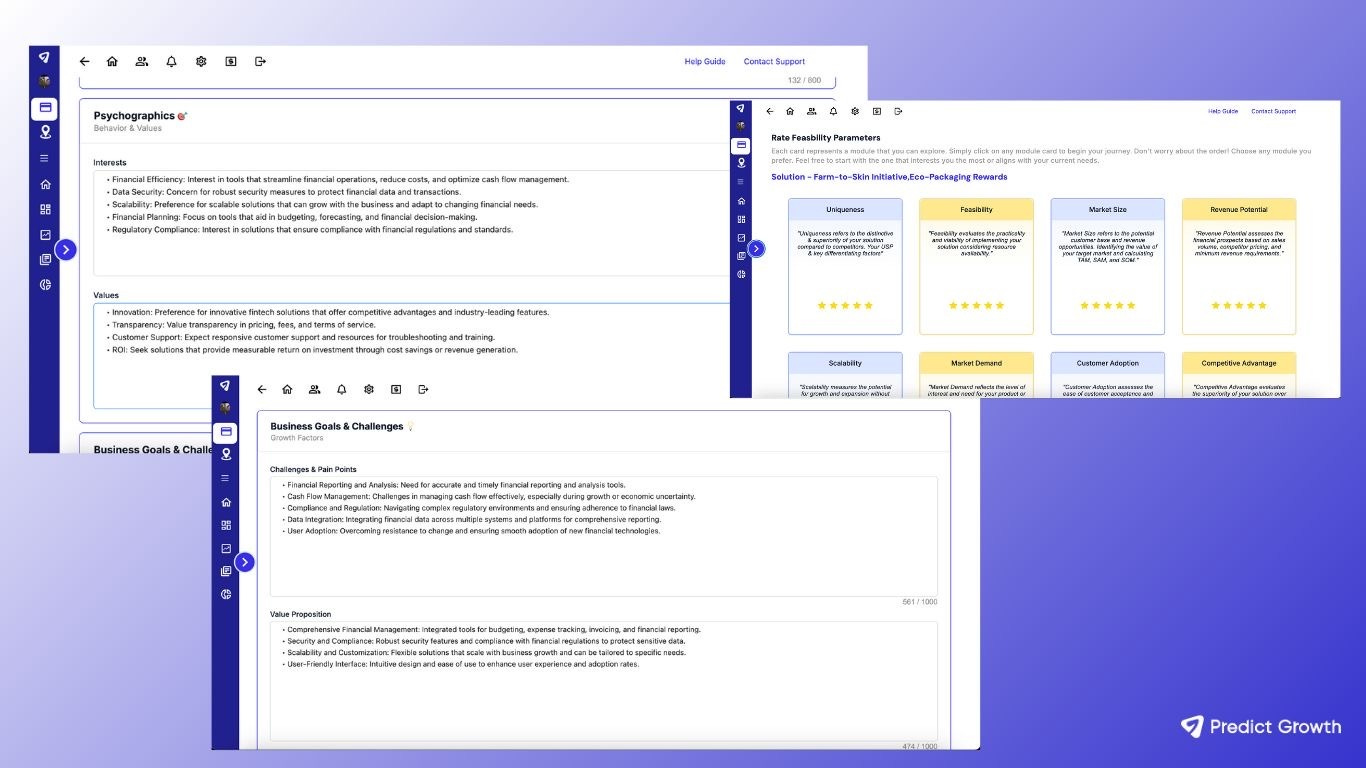How to Create Customer Personas: A Step-by-Step Guide
This article explores the importance of customer personas and ICPs for early-stage founders, breaking down their differences, why they matter, and how to create them.
Have you ever launched a product, crafted a marketing campaign, or built a service only to feel like it just didn’t hit the mark? Chances are, the problem wasn’t your idea—it was understanding who you were speaking to. That’s where customer personas come in.
When you create these personas, keep in mind that they will look different depending on whether you’re focusing on businesses (B2B) or individual consumers (B2C).
So, how do you go beyond the generic "target audience" definitions to build personas that drive results?
What's an Ideal Customer Profile (ICP), and Why is it Essential?
A customer profile is like building a clear picture of your dream customer backed by real data. For early-stage companies, creating an Ideal Customer Profile (ICP) is all about zeroing in on the people who truly get your solution and can’t wait to use it. These are the customers who’ll benefit the most from what you offer, stick around for the long haul, and help you grow through their feedback and loyalty.
Why It Matters:
Focus: Knowing your ICP helps allocate resources efficiently, including marketing, product features, and even pitch deck slides.
Alignment: Teams from sales to engineering can work cohesively when they’re solving for a well-defined customer.
Investability: Investors see ICPs as evidence of market understanding, a critical factor in building trust.
But for early-stage founders, there’s another layer to consider: Early customer personas.
While an Ideal Customer Profile (ICP) defines the type of business or customer segment that best fits your solution, early customer personas take a deeper dive into understanding the individual people within that group. These personas are the human faces behind your ICP—their goals, frustrations, decision-making processes, and what motivates them to say “yes” to your product.
What Are Early Customer Personas (ECPs)?
An early customer persona represents the first adopters of your product—the people willing to take a chance on your MVP or beta version. They’re the low-hanging fruit helping you validate your product, gather feedback, and iterate toward product-market fit (PMF).
Key Features of Early Customer Personas
Adopters, Not Idealists: Early customers may not perfectly match your vision of an ICP, but they are willing to test and provide critical insights.
Pain-focused: They’re driven by an immediate pain point that your product addresses, even if it’s not fully polished.
Motivated by Curiosity or Necessity: They might try your product because of curiosity, affordability, or the lack of alternatives.
How to Identify ECPs
Start by asking:
Who feels the pain point the most?
Who is actively searching for solutions?
Who will benefit even from an MVP?
How Do Early Customer Personas Differ from ICPs?
Early customer personas (ECPs) are crafted to focus on MVP validation. These are the people or organisations most likely to engage with your product during its early stages. Their primary purpose is to provide feedback and usability insights, enabling you to achieve product-market fit (PMF). However, ECPs don’t necessarily represent the customers who will drive long-term growth and profitability.
In contrast, ideal customer profiles (ICPs) are designed to be scalable. These profiles focus on customers who will deliver the highest customer lifetime value (CLV) and represent a sustainable market segment. Unlike early adopters, ICPs demand a polished, value-driven solution that aligns with their long-term needs.
While ECPs help you refine your product, ICPs ensure your business can scale and sustain profitability by targeting a broader and more specific audience.
Predict Growth suggests that once you’ve validated your product and achieved some traction, you should define your Ideal Customer Profile (ICP). ICPs represent the most profitable, scalable, and sustainable audience for your product.
How to Craft Ideal Customer Profiles (ICPs)?
1. Use Data from ECPs
To really connect with your early adopters and understand how they drive your business, it's helpful to understand a few core areas:
Firmographics (B2B):
Look at the type of businesses that were the first to adopt your product. What industries do they belong to? How big are they? Are they startups, small businesses, or mid-sized companies? What’s their revenue like? Also, where are they located—local, national, or international?
Demographics (B2C):
If you're serving individuals, look closely at the age groups, income levels, educational backgrounds, and lifestyle choices of your first customers. Are they young professionals, established executives, or retirees? Do they prioritise convenience, affordability, or luxury?
Psychographics:
Finally, dig into the deeper motivations behind why your early adopters chose you. What problems were they trying to solve, and how did your product make their lives easier or better?
These patterns will help you spot trends in which businesses benefit most from your offering and where to focus your marketing.
2. Segment Your Market
When moving from Early Customer Profiles (ECPs) to Ideal Customer Profiles (ICPs), create specific segments so you can target the right people or businesses that truly benefit from your product. Here's how to break it down:
Firmographics (B2B):
Think about where your product is truly making a difference. Which industries are seeing the most impact? Are they tech companies, retail, or healthcare? Also, consider company size—does your product cater better to small businesses or larger enterprises?
Psychographics (B2C):
When it comes to individuals, what are their purchasing habits? Do they prefer buying online or in-store? Are they driven by quality, price, or convenience? Do they seek sustainability or luxury?
Segmentation like this helps you shift from targeting a broad audience to focusing on the people or businesses who truly need and value your product.
Correlation Between Personas and Market Segments
Market segments are broad categories where you group people or businesses based on shared characteristics, like their age, location, industry, or buying habits. For example, you might have a segment for "tech startups" or "millennials who prefer online shopping."
Personas, however, go a step deeper. They’re fictional, detailed profiles of your ideal customers within these segments. While a segment tells you who might be interested, personas explain why they’re interested and what drives them. For instance, instead of just saying "tech startups," you might create a persona like “Jake, the founder of a 10-person tech company who is looking for ways to scale quickly and cut costs.” This gives you a much clearer idea of what Jake cares about, what challenges he faces, and how your product can solve his specific problems.
3. Define Scalability Metrics
When defining your Ideal Customer Profile (ICP), you want to make sure it fits with metrics that help you scale your business. Here’s how:
Customer Lifetime Value (CLV): This is how much profit you expect to make from a customer over their entire relationship with you. You want to make sure your ICP represents customers who will stick around and bring in long-term revenue.
Acquisition Cost: This is how much it costs you to acquire a new customer. Your ICP should be a group of people or businesses you can reach within your marketing budget without overspending.
Market Size: You want your ICP to represent a large enough group to fuel growth. If your target market is too small, you might struggle to scale. But if it's too large, your marketing efforts could become too scattered.
4. Map the Journey
Understand the customer journey for your ICPs. Here’s how-
Awareness: This is when your ICP first realises they need a solution like yours. Are they discovering your product through social media, word-of-mouth, or searching online?
Consideration: Now that they know about your product, they start comparing options. What factors matter most to them—price, reviews, ease of use?
Decision: This is the final push that makes them choose your product over others. It could be a special offer, a solid case study, or a personal recommendation. Knowing what closes the deal lets you fine-tune your messaging to seal the deal.
B2B vs. B2C Personas: What’s Different?
B2B Personas
Firmographics: Instead of focusing solely on demographics, B2B personas emphasise organisational details, such as company size, industry, location, and annual revenue.
Roles & Hierarchies: B2B personas include the decision-maker (e.g., CEO), influencer (e.g., department head), and end-user (e.g., team member).
Goals and Pain Points: These are often tied to productivity, cost efficiency, or scalability. For example: “How does this tool help my team perform better while reducing operational expenses?”
Buying Behavior: Longer, more research-heavy buying cycles with an emphasis on ROI and stakeholder consensus.
B2C Personas
Demographics: Age, income, gender, education, and location play a bigger role.
Psychographics: Lifestyle choices, values, hobbies, and emotional drivers are critical. For example: “How does this product fit into the sustainable lifestyle?”
Buying Behavior: Decisions are more emotional and impulsive, with shorter buying cycles.
Steps to Create Personas for Both B2B and B2C
Use personas to validate your market segments and refine your business strategy. In pitch decks or investor meetings, show how your product directly addresses these personas.
By clearly defining your customer personas and understanding their correlation with market segmentation, your startup will be better equipped to build focused products, create targeted marketing campaigns, and secure investor interest.
Final Thoughts
For early-stage founders, building ICP and customer personas can feel like a lot of guesswork at first, but remember: every conversation, every feedback loop, and every interaction helps refine the understanding.
Your ICP gives you the big picture, helping you focus on the right market, while your ECPs give you the details, helping you connect on a personal level.
The best part? These aren’t set in stone—they’ll evolve as your business grows and you learn more about your customers. Start with what you know today, listen carefully, and be ready to adapt.
Your customers are the heart of your business. When you take the time to understand them deeply, you’re not just setting yourself up for success—you’re building something they’ll believe in too.
This article was co-written by Jagriti & team at Predict Growth, drawing on their deep experience in helping early-stage founders and businesses understand their customers better and scale smarter.









